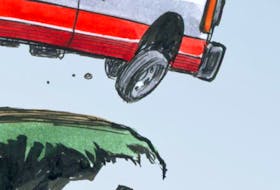
I think about that every time a Canadian cabinet minister talks about trying to find a way to help former and active Canadian soldiers deal with the personal fallout of war.
Last week, it was new Veterans Affairs Minister Seamus O’Regan and Defence Minister Harjit Sajjan, talking about the need for a better suicide prevention programs for veterans. Between 1994 and 2014, 238 Canadian regular forces soldiers have taken their own lives — the ministers talked about the need to bring that number to zero, and to beef up resources for veterans. They also talked about a key breakdown: the point at which military leave the aegis of the Armed Forces and become the responsibility of the Department of Veterans Affairs.
It’s good news, but in crucial ways, it’s trying to solve a problem after the fact.
When Canadian troops were first sent to Afghanistan, there was a great hue and cry about how they weren’t prepared for battle in the desert; how their equipment and camouflage were substandard, how they had to lease equipment from other NATO countries to even reach the battle zone.
Well, that’s far from the only thing that was missing. The strategic thinking was all about what soldiers need in the theatre of war — it was not about what would be required when the combat was over and former soldiers were trying to reintegrate into the normal world of spouses, families and job requirements.
Canada’s not alone in this. When governments do the math on getting involved in foreign conflicts, they weigh the political risks of sending troops and they look at the upfront logistical costs of maintaining an overseas force. The military might be good at calculating the need for trauma hospitals, for medical evacuation — in fact, they do that so well that soldiers are surviving and returning from the battlefield with a range of injuries that simply wouldn’t have been survivable a decade ago.
Battlefield medicine has leapt forward — aftercare has not.
Statistically, the military can generate a pretty good idea pretty quickly about the attrition and wear and tear on equipment, and plan for the costs needed to replace it.
Equally, as gruesome as it sounds, if a force of 500 is sent into a battle zone, it should not be impossible to calculate the number of soldiers likely to need advanced long-term medical care — and long-term mental health care as well, not only for the soldiers themselves, but for their family members.
All of that should be budgeted for at the very beginning — not years after the fact.
If, when you do the math, we can’t afford the full resources on the ground to provide care to all veterans, we can’t afford to be jumping into foreign conflicts either.
It is excellent news that the military and the government plan to try and get a handle on the extent of care that soldiers and former soldiers need now — that they need as a result of being sent to places like Afghanistan. But it’s a calculation that should have been done at the outset. The failure to have resources at the ready has cost lives.
To quote another old saying, this is already too little, too late.
Any government that plans to send Canadian soldiers into harm’s way doesn’t just have to plan for the ongoing costs of battle — it has to plan financially, strategically and resourcefully for the aftercare of those soldiers and their families long after the conflict’s done.
Anything else is reprehensible.
Russell Wangersky’s column appears in 35 SaltWire newspapers and websites in Atlantic Canada. He can be reached at [email protected] — Twitter: @wangersky.

![['<p>Defence Minister Harjit Sajjan was in St. John’s Tuesday evening for a public consultation session about the future of the military along with local MPs Seamus O’Regan (left) and Nick Whalen (right).</p>']](https://saltwire.imgix.net/harjitsajjan-3109659.jpg?cs=srgb&fit=crop&h=568&w=847&dpr=1&auto=enhance%2Ccompress%2Cformat)







